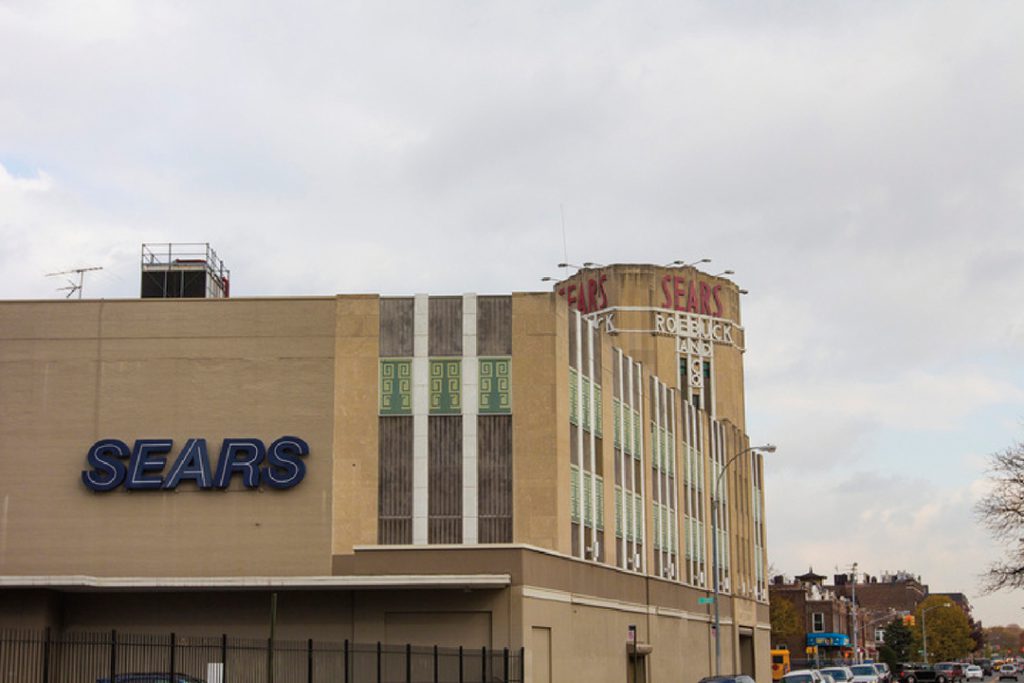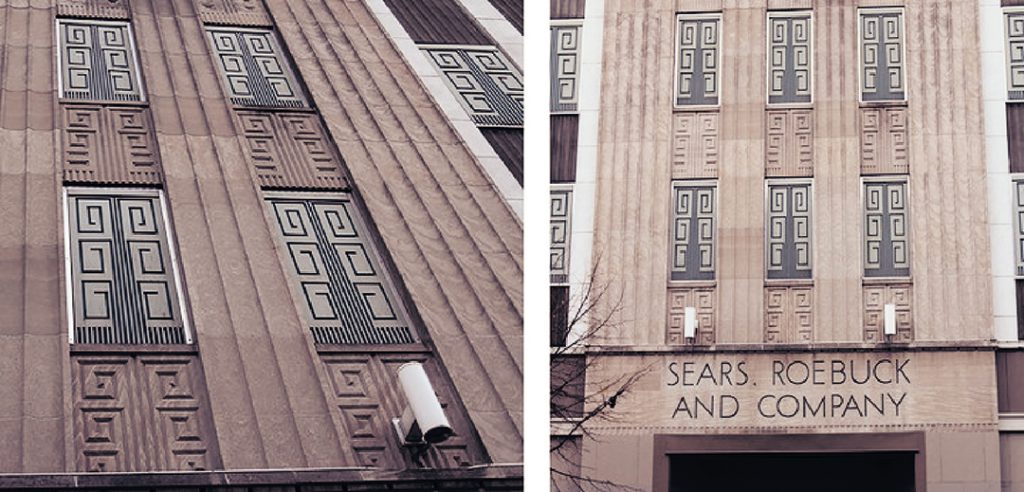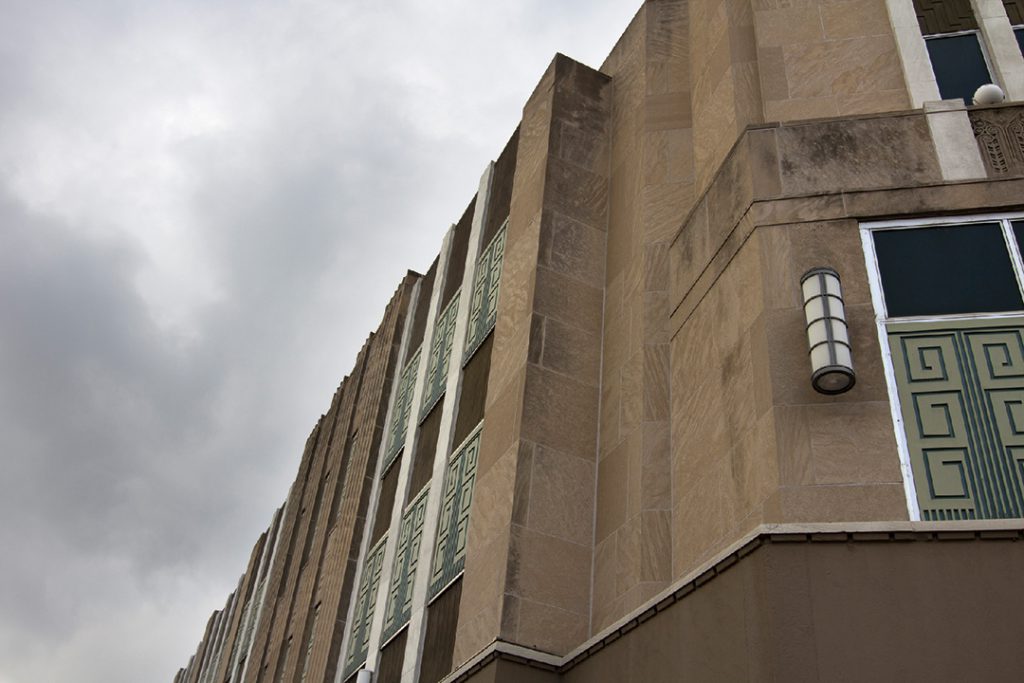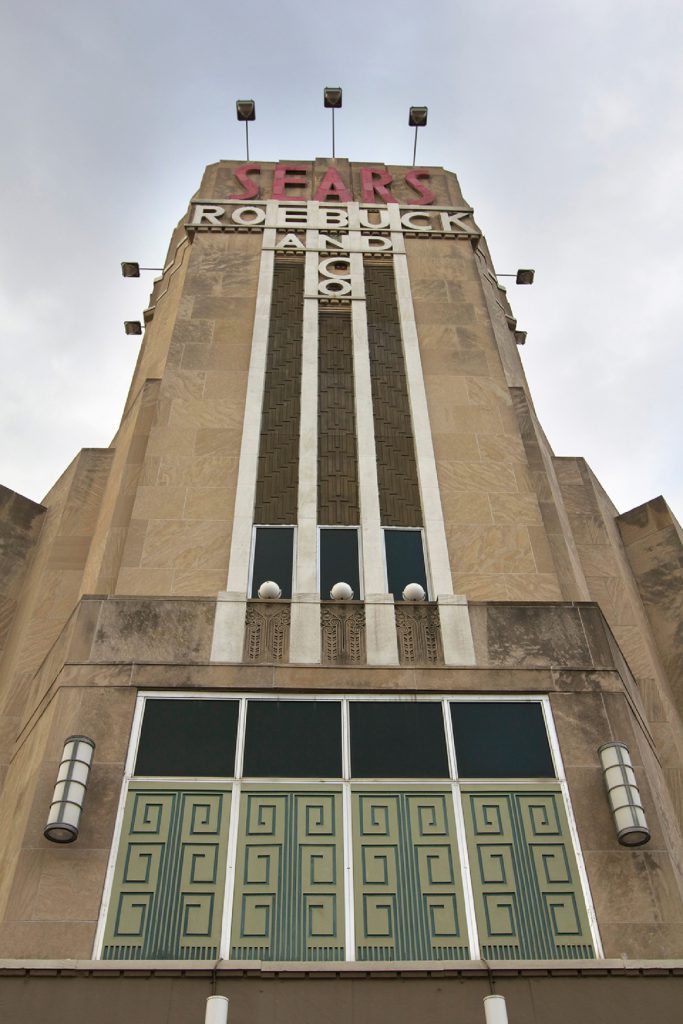The Sears Roebuck Building
By Max Rovo, Images by Koa Pennock, By Guest Editor Alldayeveryday
We then hopped on the subway to travel to the Sears Roebuck building a few stops away in Flatbush, Brooklyn. There, off the Beverly Q Train stop, resides an emblematic art deco wonder that was built in 1932, by the architecture firm Nimmons, Carr and Wright, at the height of the Great Depression and before New Deal Reform passed.

Eleanor Roosevelt addressed an audience outside of the Sears Roebuck at its opening, and FDR is said to have been the stores first customer (buying a pair of shoes) before becoming the President of the United States. In recent years, the Sears Roebuck has been named a NYC landmark so it shouldn’t change anytime soon, and regardless, we wanted to take a closer look at the Art Deco features of this timeless structure that make it uniquely American.
The new and blue Sears copyrighted sign welcomes visitors in the foreground from our initial view. The geometrical contours of the Sears Roebuck give off a technological aesthetic that derives influence from the Industrial Revolution that bled its way into WWII. The concrete structure is embedded with the stylish designs and indentions into the exterior itself. What is more, the curvy green designs are identical to one another and give off a feeling of harmony and exotic flair compared with the rest of the building. Meanwhile, "Sears" is emboldened in red to inflict an authoritative and simultaneously seductive allure to the department store.

The new and blue Sears copyrighted sign welcomes visitors in the foreground from our initial view. The geometrical contours of the Sears Roebuck give off a technological aesthetic that derives influence from the Industrial Revolution that bled its way into WWII. The concrete structure is embedded with the stylish designs and indentions into the exterior itself. What is more, the curvy green designs are identical to one another and give off a feeling of harmony and exotic flair compared with the rest of the building. Meanwhile, "Sears" is emboldened in red to inflict an authoritative and simultaneously seductive allure to the department store.
What is special about this look is that we could get a sense of the entire buildings’ enormity, while also being reminded that the Sears Roebuck is reminiscent to the Rex Theater in Paris. If one has lived-in or visited Paris, then you know the building, however, even if not, what it is key to draw between the two buildings is that they both have corner towers such as this one that serve as focal points to the structures and Art Deco nodes for the neighborhood. Rather than going for ubiquity, the Rex and Sears Roebuck building call great attention to themselves in their surrounding cityscapes.

The side doors to the Sears Roebuck building loom over streets. The doors concave inward, providing shelter from bad weather, and the façades maintain symmetry with the design of the rest of the building. Meanwhile, the concrete designs above the doorways and next to them inflict a heavy-handed aesthetic on the surrounding area, kind of like the concrete jungle in Blade Runner.

There seems to be an urge to push into the future and create a modern American aesthetic that is built into Sears Roebuck. As we gawk at its grandiose corner tower more, we are reminded that the architects who designed this building foresaw that there was no way for busy cities like New York to go but up.